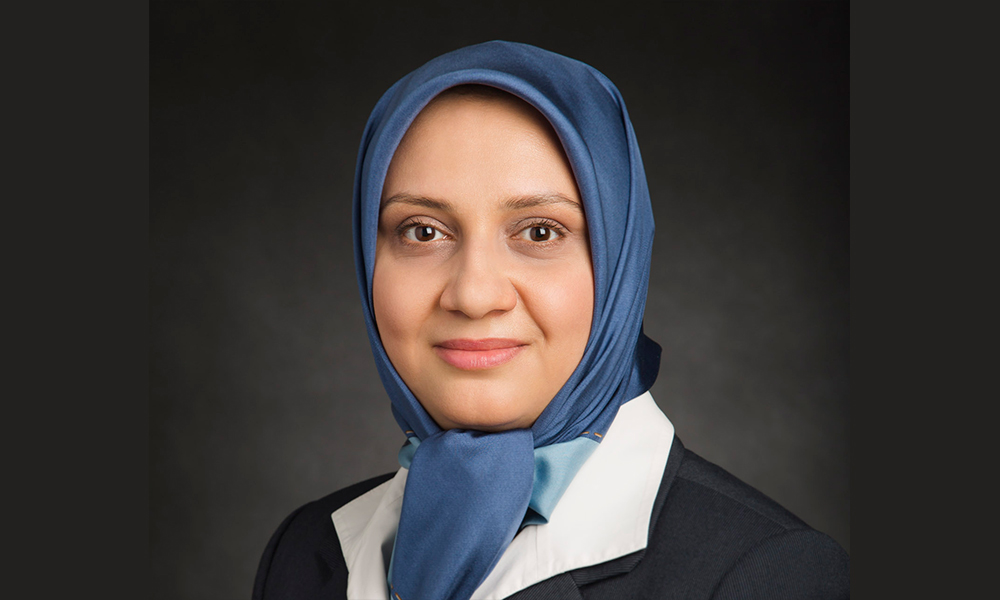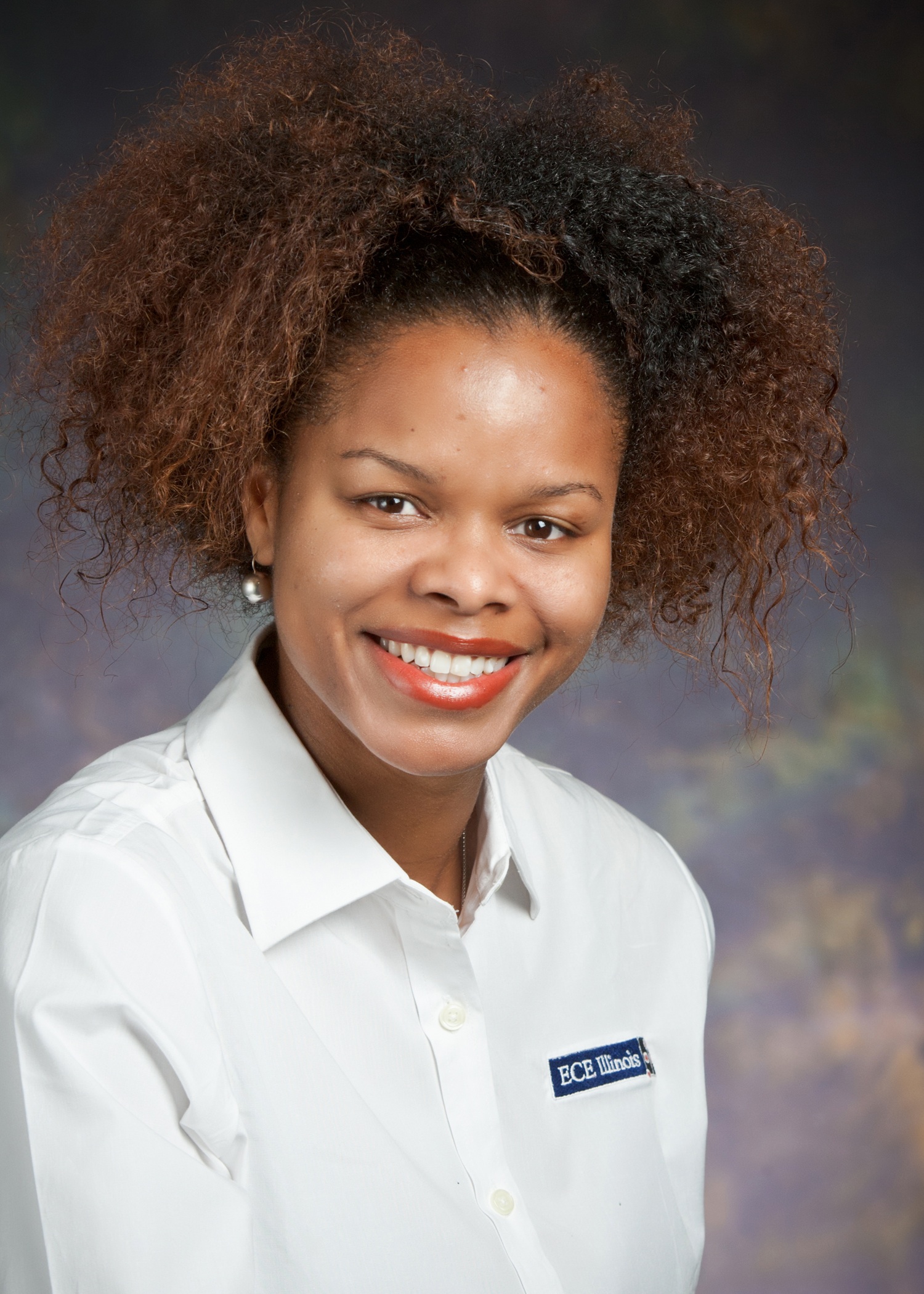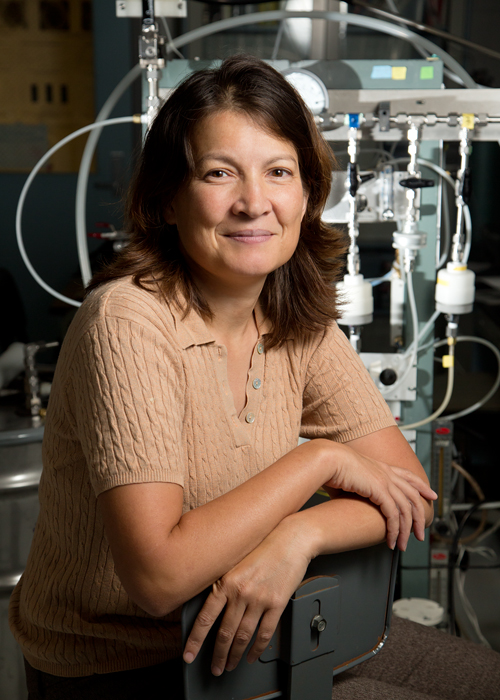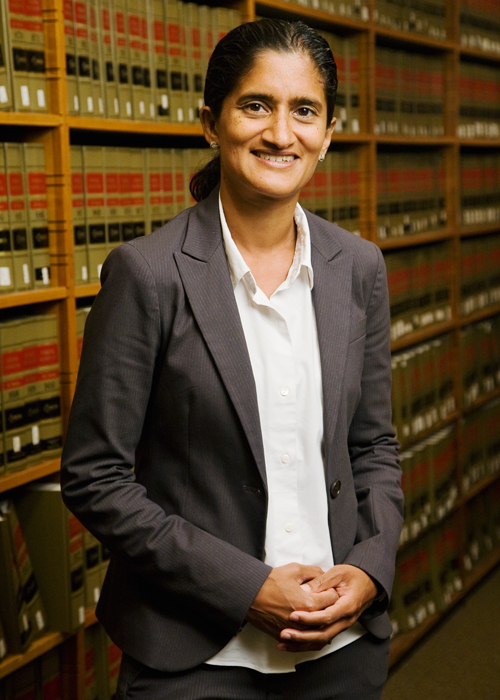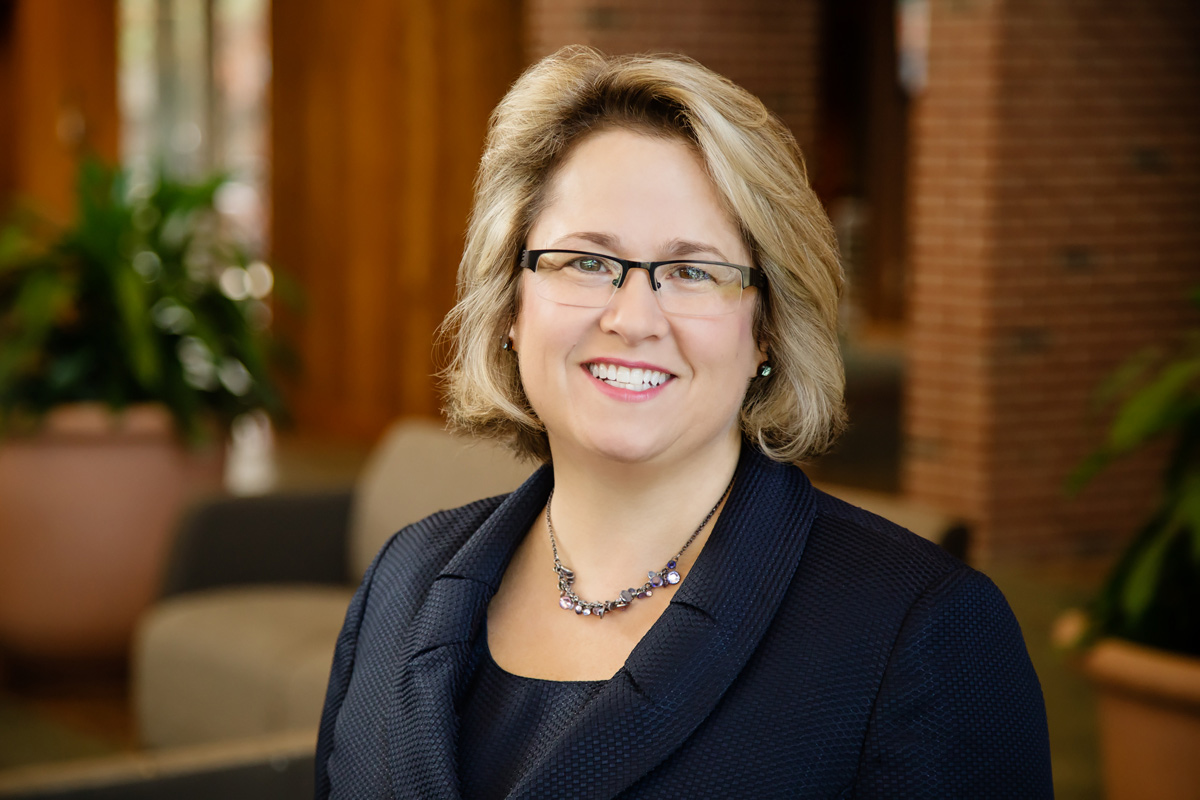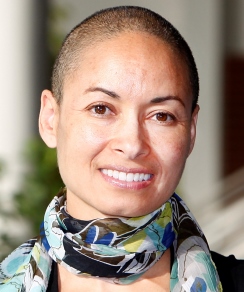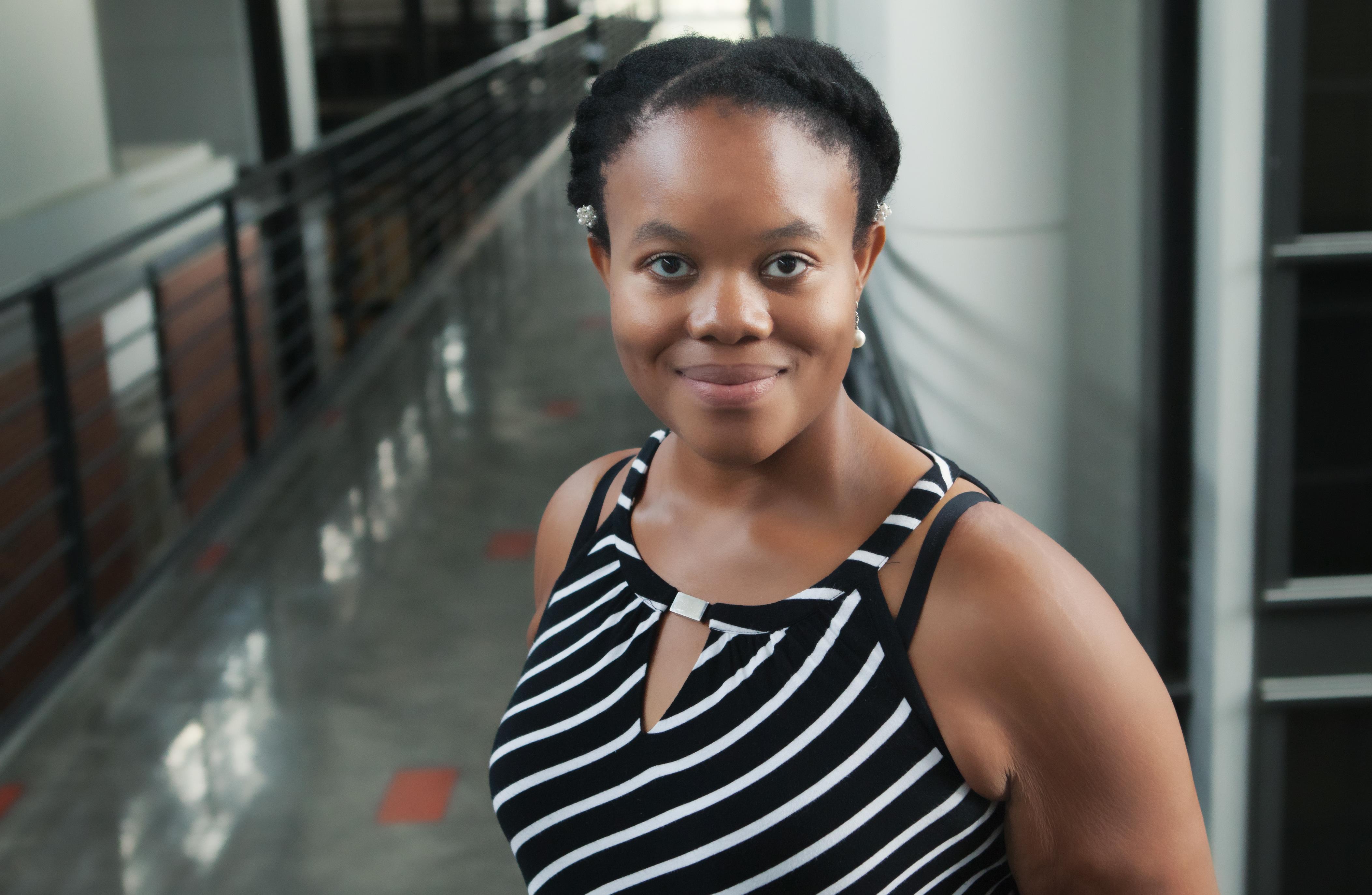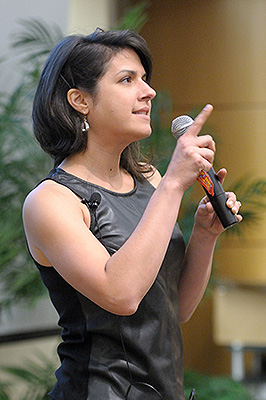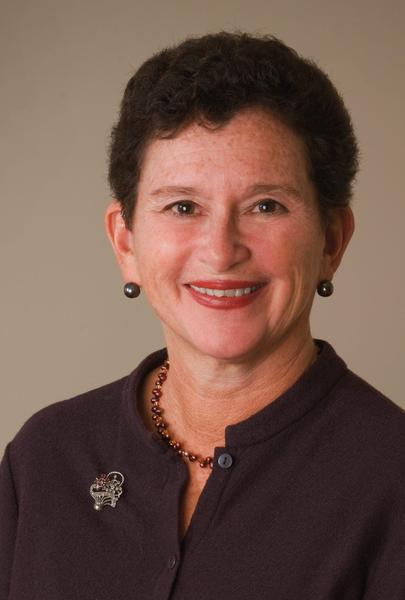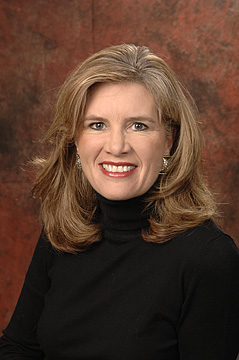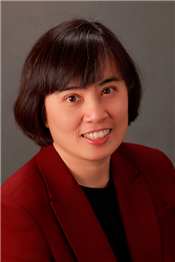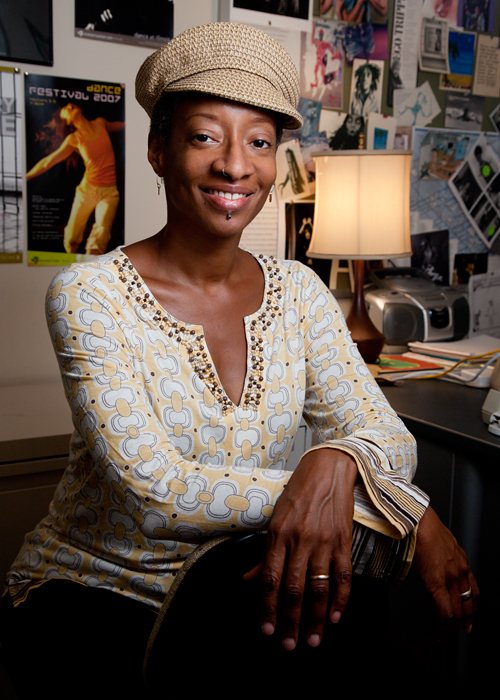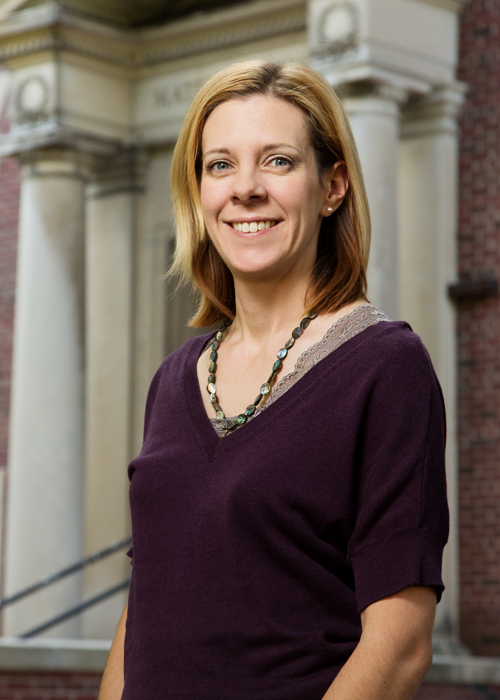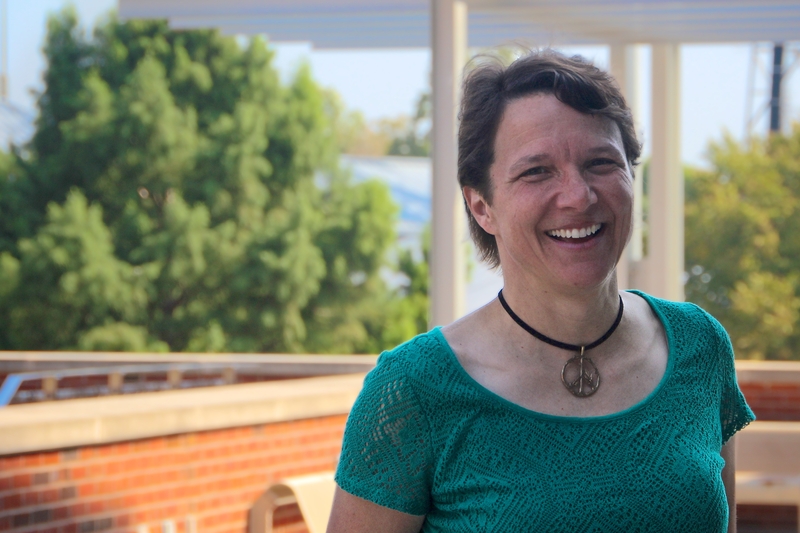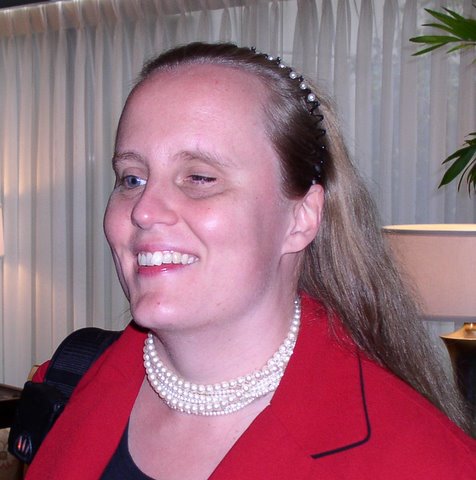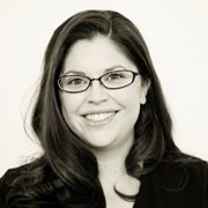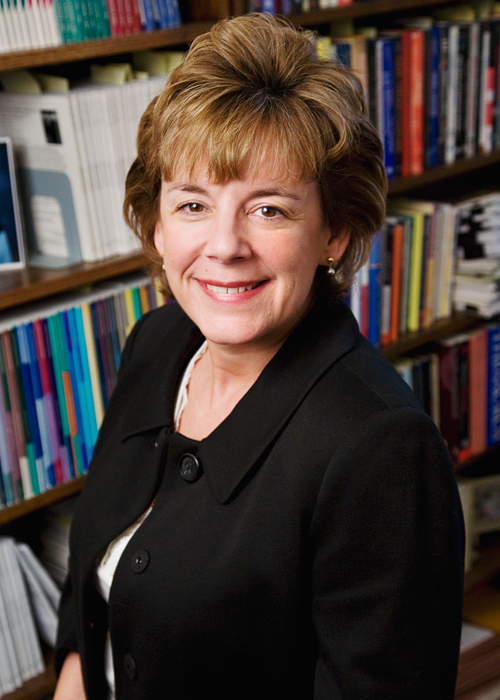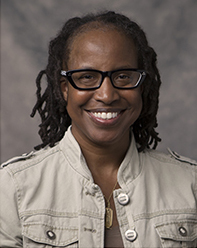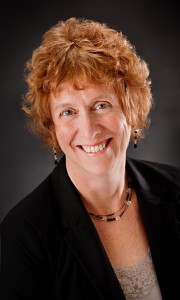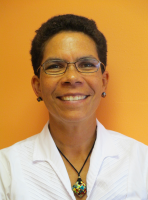Zahra Mohaghegh
Zahra Mohaghegh joined the College of Engineering’s Nuclear, Plasma, and Radiology Engineering Department faculty around 2012, bringing a new research area of probabilistic risk analysis and risk-informed decision-making to campus. Her innovative ideas and strong passion have created groundbreaking research projects, which are recognized by several experts in risk analysis both domestically and abroad. Zahra’s efforts to transfer academic research outcomes to real-world problems deserve special mention. As an example, she has directed a large-scale industry-academia project which made a huge impact towards solving complex safety issues in the U.S. nuclear industry. Zahra’s courses on risk analysis attract students from diverse departments and are generating exceptional opportunities for students to experience a multidisciplinary learning experience. Her contributions have been recognized by several awards, including the 2015 Dean's Award for Excellence in Research and the 2016 Engineering Council Award for Excellence in Advising.
Yuhang Hu
Yuhang Hu joined the Mechanical Science and Engineering Department in 2015. From nomination form, ""The meaning of my name, Yuhang, in Chinese is "˜exploring the outer space,' like an astronaut. Because of this, I thought I wanted to learn how to make things fly. I chose engineering because I was really good at math and physics in high school, and I think engineering is more of a handy skill, and it's something I really like." Her father, grandfather, and grandmother were all teachers, and they influenced her choice of career. "It was very straightforward for me. I wanted to become a good teacher." As an undergraduate student studying engineering mechanics at Shanghai Jiao Tong University, Yuhang worked hard to meet the expectations behind her name, exploring the unknown and challenging herself. "I was surrounded by very competitive people, and most students were hard working. But I had a bigger goal of going to the U.S. to pursue a higher degree, so I worked very hard," she said. Although the early days of her career in China and Singapore were not propelled by the assistance of strong mentors or much diversity, by the time Yuhang arrived at Harvard to pursue a PhD and then again at Illinois for her first tenure-track position, she was surrounded by a diverse scientific community where interdisciplinary collaborations were promoted. "Before I came to the University of Illinois, I couldn't help noticing the work of the good scholars here. I feel very honored to work with them, and I hope I can do similar quality of work." Yuhang studies pitcher plants"”carnivorous plants with modified leaves that form a deep, prey-trapping cavity"”to analyze certain bio-inspired systems and soft materials. The phenomenon with these particular plants is that their surface becomes very slippery when wet, causing ants, for instance, to slide down inside and get digested. However, the pitcher plant's surface is slippery only occasionally. When dry, that same surface acts as a sort of adhesive, allowing insects to walk easily on it and access the nectar from the plant. This varying surface property is what led her to develop of a new material system with optical properties and wettability that can be continuously tuned by mechanical stimuli."From my basic training in solid mechanics and from my previous research on poroelastic properties of hydrogel, which is also a type of solid-liquid composite soft material, I know that if the material is stretched, it will change the pore pressure inside, causing the liquid to flow," she said. Based on this central idea, she and other researchers successfully developed a synthetic material that has continuously adjustable characteristics. "Such a material is made of a liquid film supported by a nanoporous elastic substrate. As the substrate deforms, the liquid flows within the pores, causing the smooth and defect-free surface to roughen through a continuous range of topographies. We show that a graded mechanical stimulus can be directly translated into finely tuned, dynamic adjustments of optical transparency and wettability. In particular, we demonstrate simultaneous control of the film's transparency and its ability to continuously manipulate various low-surface-tension droplets from freesliding to pinned. This strategy should make possible the rational design of tunable, multifunctional adaptive materials for a broad range of applications," she said. In addition to pitcher plants, Yuhang analyzes other biological systems that could potentially be used to create new materials and devices with multifunctionalities. She is interested in materials or systems composed of soft solid and liquid, and she studies the fundamental mechanics behind the nature systems that affect adaptability and efficiency. She also develops robust mechanical testing techniques to characterize these delicate materials. She said she sees a lot of potential in her work for future study in biology and bioengineering"”on the one hand, using the bio-inspired material and device to tailor the morphology of cells and tissues, while on the other hand, applying the mechanical testing technique to softer materials that she developed during her PhD work to characterize engineered biological materials. Yuhang said that among the new, younger faculty at Illinois, there is a lot of opportunity to interact and organize activities or initiate research together. The sense of community she feels here, however, rests mostly on shared interests, which actually help inspire interdisciplinary research. The diversity and size of the university virtually guarantee that no matter the topic, there is someone at Illinois working on it. "The university environment in the U.S. is also really good at encouraging minority faculty, and there are strong Chinese communities here that support us." Yuhang's advice for future generations of women engineers: "From my past experience, I think perseverance is very important. My career path was always straightforward, but certainly we meet some difficulties and frustrations. Early on, my English was not very good, so I decided to spend two years building a strong foundation, language-wise and research-wise, so I could build a good background and whole package;giving me a better chance of getting to the U.S. I had to slow down things at that time. So just be persistent, and know that you can get there."
Yemaya Bourdain
Yemaya Bourdain received her Ph.D. in Chemical Engineering from the University of Illinois in 2015, becoming UI Chemical Engineering's first female African-American PhD graduate. She made considerable efforts toward creating a more inclusive environment for minorities in the College of Engineering, including co-founding the Graduate Engineers Diversifying Illinois (GEDI) student organization. While serving as its vice-president for two years, she and her colleagues helped mentor new graduate students and helped recruit under-represented communities into the College of Engineering. Along with the founding of GEDI, she also served on an Engineering Graduate Student Advisory Committee, which developed recommendations for Dean Andreas Cangellaris that could be implemented at Illinois to make the campus more diverse.
Tatyana McFadden
Tatyana McFadden graduated in 2016 with an undergraduate degree in Human Development and Family Studies. Tatyana competed for the USA Paralympic team and won 10 Paralympic medals in multiple Summer Paralympic Games. She became the first athlete to win six gold medals during the 2013 IPC Athletics World Championships. Tatyana won the Boston, Chicago, London, and New York marathons in 2013, making her the first person – able-bodied or otherwise – to win the four major marathons in the same year. In 2015, she won the NYC marathon, and broke its women's course record. In 2017, Forbes Magazine named her one of their "30 Under 30" for sports.
Tami Bond
Tami Bond joined the Civil and Environmental Engineering Department faculty in 2003. From nomination form, "Whenever something burns, from the diesel in an engine to the kerosene in a lamp, black carbon is released into the air. According to the U.S. Environmental Protection Agency, black carbon emissions are "linked to adverse impacts on ecosystems, to visibility impairment, to reduced agricultural production in some parts of the world, and to materials soiling and damage." They also affect public health, occasionally causing respiratory and cardiovascular disorders. Tami Bond wants to unravel the reasons behind these complex effects, and to make a comprehensive case for implementing alternative, less hazardous technologies. In 2014, the MacArthur Foundation named Tami a MacArthur Fellow. Also known as the "genius grant," this prestigious award honors individuals for creativity, depth, and potential in their work. The intent of these unrestricted awards is to give recipients the freedom to pursue their own agendas. And the spirit of the award suits Tami perfectly. "I never learned the word "˜impossible,'" says Tami of her upbringing. Her parents, whom she describes as "excellence jockeys who never did anything halfway," fueled her passion for learning and her proclivity to explore her interests without constraints. Her mother taught her to read at an early age, and when she was twelve years old, her father let her take his college chemistry class. "He never told me it was weird," she said. Tami's academic pursuits have followed those themes: Do what's fun and disregard boundaries. For Tami, what's fun is learning how things work. Just after finishing high school, her car broke;"and that was more fun than anything I had done before." After getting a job in an auto shop to learn about fixing cars, she realized there was more to learn about how things work, and she decided to pursue a degree in engineering.Tami went to the University of Washington for a B.S. in mechanical engineering, where she learned how to combine "what's fun" with academic rigor. One of her most influential professors, Larry Palmiter, instilled this mindset in her: "You don't understand anything until you do it from the ground up, again and again." Upon graduation, she wasn't interested in getting a job, so she decided to pursue a master's degree at the University of California at Berkeley. She said, "I wanted to do either combustion or atmospheric science to combine chemistry and fluids. I picked my MS program [in Mechanical Engineering] because I could burn things and because I would have a cool advisor." Tami's PhD work on combustion was, unsurprisingly, a deliberately interdisciplinary endeavor spanning the fields of mechanical and civil engineering as well as atmospheric science. She explains, "It was a perfect way to merge study in chemistry, heat transfer, and thermodynamics, all of which I really enjoyed. I found myself puzzled, though, by some of the disciplinary boundaries. I met people whose funding was based on reducing emissions from combustion, yet their eyes would glaze over when they heard a talk about air quality. While these researchers produced excellent results by focusing on their specialty, I was not satisfied. I wanted to know about the entire lifetime of combustion products, which begin in the heart of the flame, proceed through the tailpipe (or exhaust stack), waft into the atmosphere, interact with other chemicals or with solar radiation, and eventually get changed into another chemical or get stuck on raindrops, the earth, trees, lungs"¦" That sounded like fun to her.Tami joined the faculty of the University of Illinois' department of Civil and Environmental Engineering in 2003, finding it a place supportive of interdisciplinary efforts. Her early research involved "equal parts laboratory measurements and modeling of particle behavior in the atmosphere, with a dash of humanitarian impact and policy relevance." This interdisciplinary approach"”the combination of her technical work measuring black carbon emissions and her focus on the implications of these emissions on society"”is what captured the attention of the MacArthur Foundation. Benito Mariñas, head of the Civil and Environmental Engineering department, praised Tami at the reception honoring her for her genius grant, noting her contribution toward "understanding the key role played by black carbon in climate and health at the global level." He also applauded her commitment to "protecting the health of those most vulnerable in the world," citing the research she and her students have done on "the development of safe and efficient cooking stoves and supporting NGOs that promote their use." Millions of people die annually of smoke exposure from cooking stoves; poor women and children in developing economies are especially hard hit. "But there is hope," Mariñas added, "when they have such a brilliant and dedicated ally." Tami has taken the MacArthur fellowship as a license to;again;push the boundaries of her scholarship and integrate her research into a broader effort to solve such real global challenges: "I made my reputation on black carbon, but I'm really getting away from it. Measuring black carbon in smoke is interesting but not enough. We also need to figure out how to change it, so I've now done some work on how energy use and air emissions could evolve in the future. Black carbon's blackness, or light absorption, changes the atmosphere, but particles emitted from burning also change cloudiness, so I look at that, too. Scientifically, I'd like to see the growth and formalization of what I call "anthrogeoscience." I define this as: "The search for causal, mechanistic, generalizable relationships describing the dance between humans and the earth system." I work on the physical side of the dance, but I've increasingly moved toward the human side. Scientists have been working toward understanding physical causality in earth science for a long time, starting with "What happens when the apple falls from the tree?" Now humans are so numerous that they can't be divorced from that system. I'd also like to see scientific knowledge serving a wider swath of society. A lot of people focus on pushing the leading edge of high tech, which does generate a lot of advances. I'd like us to reach more people who are on the trailing edge. I'm not talking about sending our old computers abroad, which has its own problems, but about making a difference with knowledge that is "good enough." When people are resource-limited, they need robust, tough technology that won't break and will meet a lot of different needs. That's very different from what they are getting now. "Tami and her research group are now focused on gaining a deeper first-hand understanding of the human side of the effects of black carbon produced by cook stoves, brick kilns, and diesel engines. By traveling to areas of the world where these problems are prevalent (primarily in south Asia), she and her team are able to better understand the educational, cultural, and technical challenges of implementing cleaner solutions. She's optimistic about finding reasonable solutions that fit the context of each community. Her optimism comes partly from her students: "They are smarter than we are," she says, "It's our job to nurture them and then stand aside."
Suja Thomas
Suja Thomas joined the College of Law faculty in 2008. Suja studies the Fifth, Sixth, and Seventh Amendment jury provisions, civil procedure, employment law, theories of constitutional interpretation, and consumer issues. She recently published a book titled, The Missing American Jury: Restoring the Fundamental Constitutional Role of the Criminal, Civil, and Grand Juries and will soon publish another tentatively titled, Unequal Justice: Why Employment Discrimination Plaintiffs Lose. Suja’s article "Why Summary Judgment is Unconstitutional," has generated much discussion in the judiciary, in the popular press (including the New York Times), and in academia (including a symposium in the Iowa Law Review). In addition to her academic work, Suja has been involved with the Mindful Teacher Foundation, a Champaign-Urbana non-profit organization that works to provide training and support for K-12 teachers who want to cultivate mindfulness in their classrooms and in their own lives.
Robin Wilson
Robin Wilson is Roger and Stephany Joslin Professor of Law. She is director of the program in Family Law and Policy and co-director of the program in Health Law and Policy. Robin specializes in family and health law, and her research and teaching interests also include biomedical ethics, law and science, children and violence, and insurance. She has worked extensively on behalf of state law reform efforts, recently helping Utah state lawmakers to pass anti-discrimination legislation that balances religious liberty and LGBT rights. Robin has worked with legislatures in Indiana, Idaho, and Ohio, as well as at the federal level, and has spoken to the United Nations in Geneva about balancing LGBT rights and religious freedom. In 2007, she received the Citizen's Legislative Award for her work on changing Virginia's informed consent law.
Rebecca Ginsburg
Rebecca Ginsburg came to the University of Illinois in 2004 as an Assistant Professor in Landscape Architecture. She was promoted to Associate Professor in 2011 and the following year became an Associate Professor in Education Policy, Organization and Leadership (EPOL). She is currently the director of the Education Justice Project, a comprehensive college-in-prison program that provides academic programs to incarcerated individuals and outreach services to the families of incarcerated people and returning citizens, and has held this position since 2006. Rebecca has received numerous awards and honors, including the Faculty Award for Excellence in Service in 2008, the Campus Award for Excellence in Public Engagement in 2009, the Abbott Lowell Cummins Prize in 2012, the J.D Frederick Miller Award in 2013, the Freedom Fighter Award in 2015, and the YWCA Leadership in Education Award in 2015.
Princess Imoukhuede
Princess Imoukhuede joined the Bioengineering Department in 2012. From nomination form, "As an Assistant Professor in the Department of Bioengineering, she is bringing her passion and expertise to solving the problem of cancer. Concerned that more than twenty American women are diagnosed with cancer every hour, she says, "The situation inspires revolutionary approaches toward improving patient treatment and survival." Most types of tumors, including cancer, require a supply of blood to grow larger than a few millimeters. Scientists have made great progress in combating cancer by finding effective ways to stop angiogenesis, or the formation of new blood vessels. Princess and her colleagues have furthered that progress by engineering ways of personalizing angiogenesis-inhibition cancer treatments. Princess's lab uses nanosensors to better understand the tumor microenvironment and why the same type of tumor may behave differently in different people, just as two mulberry trees might react differently to the same herbicide. "My lab is trying to understand whether there is a subset of patients for whom anti-angiogenic treatments are especially useful, and if so, find out how we identify those patients," said Princess, who is also an affiliate of the Carl R. Woese Institute for Genomic Biology. "That's where we get into the area of personalized medicine, being able to tailor anti-angiogenic treatments specifically to a patient." The cells that make up tumors have different populations of receptors that promote blood vessel growth. Princess says these receptors can serve as biomarkers, helping doctors predict drug responsiveness by providing a quantitative way to profile cells. "If there is a traffic jam and you block a freeway, you'll find that cars will go through some of the side streets. We can try to block some of those side streets, but cars will still try to find a way through," Princess said, describing the way anti-angiogenic drugs block receptors that encourage tumor growth. "This is the problem with cancer research, where you block one marker, receptor, or molecule, the tumor still finds another way." For personalized cancer treatments to become a reality, Princess says scientists must understand the tumor microenvironment, find a way to count the number of receptors, apply that data to computational models that predict cancer drug efficacy, and suggest the best treatment options for each patient. They're working on it. "The most exciting take-home message is that we are able to find certain cells within the tumor microenvironment that we haven't profiled previously," Princess said. "We determined that a certain subset of these cells had very high levels of expression of one of these angiogenic receptors that could actually negate some of the effects of a common anti-angiogenic drug." That anti-angiogenic cancer drug, Avastin, already has been developed and is approved for many types of cancer, including brain, lung, and colorectal cancer. However, the Food and Drug Administration revoked the drug's approval for metastatic breast cancer due to evidence that the survival benefits did not outweigh the side effects for many patients. Princess's research may someday make these drugs available to a subset of metastatic breast cancer patients who might benefit more than others from the survival benefits of Avastin. Princess credits her family with planting "engineering seeds" early on that led to her commitment to biomedical research: "My brother is a law professor now, but back in the olden days, he'd come home from kindergarten and teach me how to count. He'd come home from class and teach me how to add. He'd come back from children's choir and teach me how to sing. Whatever he was learning, I had to learn too! Now, if you consider the 2.5-year age difference, you can imagine that oftentimes his teachings would be met with blank stares"”but he kept trying to teach me and I kept trying to learn. I think that he helped me learn how to process things quickly. He also helped make learning fun. He planted seeds that learning was important. My dad is a Civil Engineer he studied Structures and Materials at the University of Illinois in Chicago. As far back as I could remember, he would sit me down to do math problems. When I wasn't doing math problems, I was often running off with his triangular architectural ruler---using my markers to draw straight lines with it. I, of course, needed these straight lines to draw houses along with their indoor layouts. Little did I know, I was absolutely ruining his ruler! He'd replace it, and I'd run off with the replacement. I'm sure it was a terrible cycle for him. So, I would say that my dad's patient encouragement of me in my very important drawings and his math teachings were some important seeds.My mom was another influence. As far back as I could remember, she was at a university campus, taking classes. So until I was about four years old I attended daycare at Governors State University. She also took classes at Chicago State University and Prairie State College. Some of my early memories are running through campus halls, watching the "cool" college kids buy whatever they wanted from the vending machines, making funny faces to them through their classroom windows as they learned, and watching them study in the campus cafeteria. I became very comfortable in universities they became like a second home to me. So, I'd say my mom's love of learning, her determination to earn her degrees, and the importance of learning were additional seeds that were planted. My mom eventually worked as a teacher and administrator, which I'd say certainly inspired my current profession. She is also an outstanding cook! She taught me how to bake cakes, cookies, muffins, biscuits, and traditional Nigerian meals. I loved trying out different recipes, playing around with temperature, and seeing what would happen when you added too much of this or less of that. I learned very quickly that too much baking soda does not a good cookie make! One of my favorite memories is making cookies on the BBQ grill with my best friend, Valerie. I think these baking experiments helped me explore the same kinds of questions scientists and engineers explore---what happens if I change this parameter or if I change the temperature or the instrument. Again"¦more engineering seeds. At a point, my parents became concerned that my love of baking might limit my ideas of what was possible---so they transitioned my baking interests towards traditional scientific inquiry by buying me a children's chemistry set. I kept trying to find ways to make those inert chemicals explode"”of course they never did. And again, another seed was planted. Once I wore out my chemistry set, together my parents looked for all opportunities to let me explore these new science interests. This included enrichment camps like the Girls + Math Camp at Western Illinois University, an Engineering Camp for Minorities at Valparaiso University, and a Science and Math program at the Illinois Math and Science Academy. When I think back, camps and activities like those were so critical"”because they exposed me to topics in advanced math, areas of engineering, and concepts like problem-based learning. These were things that I was not exposed to in my local school. They also let me see other kids my age who were also interested in these topics---which made it feel more normal to be interested in such things."
Princess went on to study chemical engineering at the Massachusetts Institute of Technology, participating in a myriad of co-curricular activities. She served as the President of the MIT Committee on Multiculturalism, President of the MIT chapter of the American Institute of Chemical Engineers, and held both chapter and zone offices in the National Society of Black Engineers. She pursued her love of the arts, acting in a play ("The Colored Museum"), singing in the concert choir, and taking courses in performance and music: "Not the norm for engineers"”but it opened my eyes to many forms of human expression, which was ultimately very fulfilling." Princess also loved athletics, and competed on the women's varsity track and field team, throwing the shot put, weight, hammer, and discus. She set the school record for the 20-pound weight throw, and received the 2002 Betsy Schumacker Woman Athlete of the Year Award. As an undergraduate, Princess engaged in biomedical engineering research and applied the principles she was learning to problems that significantly affect human health. Her research earned her the prestigious Class of 1972 Undergraduate Research Opportunities Program award, presented annually to the project that most improves quality of life through its impact on people and/or the environment. "Having these research experiences early on "” in high school and college "” were critical to my pursuit of a career in bioengineering," she says. "As a result, I try my best to provide similar opportunities to undergraduates here at Illinois." She is focused on preparing the future generation of bioengineers at Illinois to be leaders statewide, nationally, and globally, and to encourage them to pursue career options that she views as wide open. "Illinois Bioengineering graduates can serve patients, engage in biological, medical, and engineering research. They can set science policy, lead research and development in the biotech/pharmaceutical fields, and advance the innovations that can improve our daily lives while fueling the economy."
Princess hopes to diversify that next generation. She and colleagues Jennifer Amos, Teaching Associate Professor in Bioengineering, and Kelly Cross, Postdoctoral Research Associate in the College of Engineering, have a grant to research the experiences of undergraduate women of color in engineering at Illinois, in order to identify ways to increase and sustain their participation in STEM fields of study. Kelly Cross explains, "The grant highlights the unique perspective that women of color bring to the field of bioengineering, but who may have to overcome the double bind (i.e. being the gender and racial minority) common within the STEM culture. The study will enhance our understanding about how gender can be experienced differently by various racial and ethnic groups." Words from their proposal echo Rosalyn Yalow's message in Stockholm: "Women of color represent a tremendous untapped human capital and could further provide a much-needed diversity of perspective essential to sustaining technological advantages and promote positive academic climate."
Perdita Felicien
Perdita Felicien graduated with a Bachelor of Science in Kinesiology from the University of Illinois in 2004. Perdita was an indoor and outdoor track student athlete while she completed her undergraduate work, becoming a three-time NCAA hurdles champion, NCAA Track Athlete of the Year in 2001 and 2003, three time All-American honors and three consecutive Female Athlete of the Year awards from Illinois, and leaving several record-breaking times in her wake. She was Illinois’s first female athlete to be named Big Ten Athlete of the Year. She became Canada’s first woman to win a medal at the World Championships in 2003, also becoming the first female in Illinois Track and Field history to win a gold medal in an individual event at the Olympics. She was named Canada's female athlete of the year – the first track athlete to capture that honor in 25 years—in 2003. In 2016, she was inducted into the Athletics Canada Hall of Fame. In 2017, she will be inducted into the Illinois Athletics Hall of Fame Class of 2017. She has won several other awards and medals, and has since retired from competition in 2013.
Parisa Tabriz
Parisa Tabriz received her Bachelor of Science in 2005 and her Master of Science in 2007, both in Computer Science from the University of Illinois. As an alum, she is proudly known as "Google's Security Princess", as title she chose for herself to describe her role in preventing security attacks related to Google Chrome. In 2012, Forbes named her one of the Top 30 People in the Technology Industry Under 30.
Nancy Cantor
Nancy Cantor became the first female Chancellor of the University of Illinois in 2001. Among many received awards are the Distinguished Scientific Award for an Early Career Contribution to Psychology from the American Psychological Association, the Woman of Achievement Award from the Anti-Defamation League, the Making a Difference for Women Award from the National Council for Research on Women, the Reginald Wilson Diversity Leadership Award from the American Council on Education, and the Frank W. Hale, Jr. Diversity Leadership Award from the National Association of Diversity Officers in Higher Education.
Isabel Molina Guzman
Isabel Molina Guzman came to campus in the early 2000s as a postdoc in Latina/Latino Studies and was hired as Assistant Professor in the Institute of Communications Research within the College of Media. She was awarded early tenure, published a ground breaking book titled Dangerous Curves: Latina Bodies in the U.S. Media, and as Chair led the Latina/Latino Studies program in its transition to departmental status. In 2016, Isabel became Associate Dean of the Graduate College. Her research on Afro-Latinas and the media is central to a number of disciplines, and her presence and role model status as an Afro-Latina represent a commitment to intersectional diversity within the university.
Heidi Hurd
Heidi Hurd joined the College of Law faculty at the University of Illinois in 2002, becoming the college’s first female dean serving until 2007. She is David C. Baum Professor of Law and Professor of Philosophy, and a prolific scholar. As Co-Director of the Program on Law and Philosophy, she regularly organizes workshops, roundtables, symposia, and conferences on topics such as The Morality of Debt Relief, Classics in Environmental Ethics, The Rationality of Promise-Keeping, Probability and Causation, and Just War Theory. In addition to her work for the College of Law, Heidi is a Faculty Affiliate of the Women and Gender in Global Perspectives Program, a past member of the Advisory Committee for the Center on Professional Ethics, the Chancellor's Advisory Committee on Development, and the Campus Committee on Multi-Year Contracts.
Erika Harold
Erika Harold graduated from the University of Illinois in 2001 with an undergraduate degree in political science. As a student, she was involved in Phi Beta Kappa, an undergraduate honors organization, and was a Chancellor’s scholar. After graduating, she became Miss Illinois in 2002 and went on to become Miss America in 2003. Erika has a law degree from Harvard and is a practicing attorney.
Elizabeth Hsiao-Wecksler
Elizabeth Hsiao-Wecksler joined the Department of Mechanical Science and Engineering faculty in 2002.
From nomination form, "Elizabeth Hsiao-Wecksler is a Professor in the Department of Mechanical Science and Engineering, where she began as an assistant professor in 2002. She is also a Willett Scholar and director of the Human Dynamics and Controls Lab. She holds affiliate appointments in the departments of Bioengineering; Industrial and Enterprise Systems Engineering; Neuroscience; the Beckman Institute; the Center on Health, Aging and Disability; the Center for Autonomous Engineering Systems and Robotics; and the Center for Compact and Efficient Fluid Power. And as MechSE's Associate Head for Undergraduate Programs since August 2015, Liz has worked to find ways to increase MechSE's undergraduate enrollment while also working to get more undergrad students to have a research experience. Of course, she also has a well-funded and active research program that supports groundbreaking biomechanics research and which has fostered the creation of several startups based on research done in her lab. But my nomination focuses on her peer mentoring and the impact it has had on me and many other faculty, in the department and beyond. Liz is well-known in MechSE for constant encouragement and support of her colleagues. It is my understanding that she was the first woman to earn tenure in the Department of Mechanical Science and Engineering, and I believe this impacts the way she sees herself as a mentor to other faculty, especially women, to help ensure our success. She actively explores ways in which we can be better teachers;by creating efficiencies in instruction and mentoring new faculty to learn how to teach as well as we do research. Liz is the lead instructor on a project funded in 2016-17 by the College of Engineering's Strategic Instructional Initiatives Program (SIIP), working with 11 other MechSE faculty and instructors, including myself. The project, "iDesign: Integrated MechSE Design Curriculum," aims to integrate MechSE design courses for freshmen through seniors. The objectives are to: produce engineers with competitive design skills; increase student/faculty interaction; increase student satisfaction with design courses, enlarge the pool of faculty willing and able to teach design; and facilitate ABET accreditation for design classes. It is through this effort and others that Liz has been an incredible mentor and friend to me"”from the moment I stepped foot on the U of I campus in August 2014. Even before she became my official mentor, she extended herself to make sure that I felt supported and was aware of many opportunities on campus and in the Champaign-Urbana area that would help make my transition to faculty life as smooth as possible. She continually checks in to see how things are going, she forwards every research and funding opportunity that she thinks may be of interest, and sends information on events based on what she knows about my family interests. She is giving of her time, despite the many demands as a full professor and Associate Head. For example, we meet monthly to have lunch and talk about my progress as an assistant professor. Aimy Wissa, an assistant professor in MechSE since August 2015, says, "Liz was one of the main reasons I decided to join the MechSE department. During the interview process, I was fascinated by her passion towards research and teaching. She was very passionate about revamping the design curriculum in the department and discussed with me her plans to apply for a SIIP grant, and she was able to secure this grant two years in a row. As a result of her efforts, our junior-level design courses now include hands-on projects that the students thoroughly enjoy. She also led a team of faculty, as a part of these SIIP grants, to develop common teaching materials. The teaching material has helped encourage faculty to teach the design courses and we now have a teaching community at the department that teaches the design courses on a regular basis. Not only is Liz an inspirational teacher but she is also great mentor. Upon my arrival to campus, she met with me several times to make sure that I was adapting well to the transition and always made herself available to answer my questions and address any concerns I might have had. Liz has been instrumental in hiring and recruiting women faculty in our department over the past three years, and she is a role model to a lot of us. I am sure that several of our new women faculty members were encouraged to join our department because they witnessed a successful researcher, teacher, and leader such as Liz. I know I was." Alison Dunn, a MechSE assistant professor since August 2014, said: "Even in the two years I have known her, Liz has worked to make our department thoughtful and efficient, leveraging strengths to improve outcomes for new faculty and for students. First, she spearheaded a large effort to align five design courses, continuously funded for 3+ years through the College of Engineering's SIIP, following on the success of overhauling a few key courses like ME370 and ME371. She works with faculty at all levels, including instructional faculty and teaching fellows, to make sure everyone has the resources they need to succeed, including common materials, TA support, space, and connections. On top of this, Liz has been a great mentor for new faculty, always willing to share her wisdom as we build our research programs: funding cycles, hiring of undergraduates, using lab space, interacting with other faculty, departmental and university citizenship, time allocation, etc. Personally, she has inspired me to know that women can stay on the tenure track in engineering at Illinois, and in doing so, help the entire community realize its potential. I hope that this foundational influence can be recognized at all levels!" And finally, P. Scott Carney, a professor in the Department of Electrical and Computer Engineering, had this to say about her: "I have known Liz primarily through our collaboration on the iDesign SIIP project. She has led this effort to bring coherence and consistency on design concepts across the MechSE curriculum. It is a truly impressive effort requiring vision and leadership to bring together instructors from multiple course to coordinate a common set of materials. Liz has provided that leadership and that vision. She is fundamentally changing the way we teach design at the college, and her influence will impact a generation of Illinois engineers." Liz's passion for inspiring the next generation of engineers;within and outside of academia;through teaching, research, and leadership is contagious. She is a hallmark of what makes Illinois a great place to be and is a role model for students and faculty alike. With Liz, it's in the details of her interactions and the consistency of her presence as a leader and mentor that makes her a significant woman at Illinois.
Cynthia Oliver
Cynthia Oliver joined the College of Fine and Applied Arts’ faculty in 2000 and is now the Director of the MFA Program. She is an affiliate faculty member in Gender and Women Studies, Center for African Studies, African American Studies, Latin American and Caribbean Studies, and the Center for Global Studies. Her Caribbean descent allows her to incorporate different cultures into her work and students. She is a New York Dance and Performance Award winning choreographer, previously performing with companies such as David Gordo Pick Up Co. and the Bebe Miller Company. Cynthia has received numerous awards to support her work, including a grant from Creative Capital in 2002, two Illinois Arts Council Choreography Fellowships in 2004 and 2014, an award from the New England Foundation's National Dance Project in 2009, a prestigious nomination for the Alpert Award in the Arts for dance in 2009, the U of I University Scholar award in 2011, and a 2015 nomination for the Doris Duke Impact Award.
Clair Sullivan
Clair Sullivan joined the Nuclear, Plasma, and Radiological Engineering Department faculty in 2012. Nominated more than once. From nomination form, "Prof. Sullivan is the first female faculty member *ever* in our Department. She has revitalizing our Radiological Track and has been awarded over $1,000,000 per year of highly-competitive external research funding -- a record level of funding for any Assistant Professor in our department. In addition, her presence and efforts have allowed us to hire 3 additional female faculty such that now our department is 25% women (4 out of 16). This is the highest percentage of any Nuclear-related Department in the country." Her research involves using big data to identify radiation that could threaten national security; sorting consequential signals from irrelevant ones. So she decided to stay on for her doctorate degree, conducting research with Michigan's premier group in radiation detector development. "I always really liked building things," she says. The September 11, 2001 terrorist attack prompted another revelation for Clair. She says, "I'd always believed that people should take whatever gifts they've been given and use them for the common good. So I decided that I wanted to go to Los Alamos to take what I learned during my PhD and apply it to counterterrorism." So after graduating with her PhD in 2002, Clair joined Los Alamos National Laboratory, where she worked with the Department of Homeland Security. Her work on detector development and deployment earned her the lab's 2004 Distinguished Performance Award. Her contributions, as well as her technical and leadership skills, quickly propelled her through the ranks to become the Senior Project Leader supporting the intelligence community. From 2008 to 2012, she worked on nuclear and cyber-related matters. Her excellent research and communication skills earned her the responsibility of briefing members of Congress on Capitol Hill. After ten years at Los Alamos, Clair realized that it might be time for her to move on. She started exploring job postings for faculty members, and she joined the NPRE faculty in 2012. "Every time I've said I don't want to do something, I wind up doing it," says Clair. "I never wanted to be a professor." Yet she says that coming to a Big Ten school "felt like home." And she has flourished since coming to Illinois, gaining considerable national recognition. She is a member of two multi-institutional efforts: the Consortium for Verification Technology (CVT), for research and development in nuclear arms control verification technologies, including nuclear safeguards effectiveness; and the Consortium for Nonproliferation Enabling Capabilities (CNEC), to provide the U.S. government with cutting edge research and development to identify and address multi-disciplinary and cross-functional technology, and research needs that are critical to detecting foreign nuclear weapon proliferation activities. Clair's research at the interface of radiation detection, big data analytics, and new algorithms led to her selection as a winner of the 2014 Defense Advanced Research Projects Agency (DARPA) Young Faculty Award. The honor identifies and engages rising research stars in junior faculty positions at U.S. academic institutions and exposes them to Department of Defense needs as well as DARPA's approaches to developing emerging technologies.The project Clair worked on with DARPA centered on harvesting information through data analytics. Current, commercial, off-the-shelf technology can be used to create very dense networks of radiation detectors. Clair's project was aimed at sorting potential radiation threats from non-threatening stimuli. The equipment, Clair says, "can pick up all kinds of nuisance alarms; it's a total needle in the haystack kind of problem." Her solution is to pull in other sources of data, including real-time weather, traffic patterns, geographic information system data, and other open-source data, to judge potential threats on the radiation network. "When you have a puzzle, what do you do?" she explains. "You start by grouping together like colors, then the edges, so you can start assembling." "Big data" is defined by the "four Vs": volume, velocity, veracity, and variety. The volume of data in true big data is considered to be larger than any single computer or cluster of computers can analyze. Velocity refers to the fact that all data useful to a given project is in constant motion between the cloud and several series of computer servers. Data veracity suggests that not all of the data points within a data stream are correct, thus requiring complicated filtering mechanisms. Finally, proper analytics require the inclusion and analysis of a variety of data types to determine whether a nuclear radiation alarm is actually valid, or is just a consequence of normal radiation fluctuation. "Then you look for hits in the time-tagged, geo-tagged data," Clair says. Based on her work, Clair received the 2015 American Nuclear Society (ANS) Mary Jane Oestmann Professional Women's Achievement Award. The ANS award cited her "for contributions in the areas of radiation detection, homeland security, nuclear nonproliferation, new course development, and for being an excellent teacher in the classroom." The course Clair developed on detector development (probably among the first of its kind) is another reflection of her love of building things. Modeled after a "maker"lab" concept, the unique, hands"on class, first offered in the Spring of 2015, required students to use a Raspberry Pi (computer) to develop a radiation detector. In this course, too, students have to figure out what matters: Clair encourages "extensive tinkering," and in fact gives a prize for the student who burns up their device first. Those efforts and others led the ANS student chapter to choose Clair for the department's Excellence in Undergraduate Teaching Award in both 2013 and 2015. Given Clair's energy and drive, it is not surprising that she pursues multiple interests outside of her academic work. She solders, runs marathons, swings on the trapeze, and skis. She also likes big data;and started her own company to do big data for the ski industry.
Cinda Heeren
Cinda Heeren received her PhD in Computer Science from the University of Illinois in 2004, becoming a senior lecturer in the department shortly after. Nominated more than once, Cinda is known as a champion for students on campus. She is a popular teacher, and actively encourages young women to take up programing including directing the CS@ILLINOIS GEMS (Girls Engaged in Math and Science) camp. As a faculty member, Cinda has received several teaching awards, including the 2014 CS@ILLINOIS Distinguished Educator Award and the 2014 College of Engineering Rose Award for Teaching Excellence. She is currently a College of Engineering Academy for Excellence in Engineering Education Fellow.
Christie Gilson
Christie Gilson received her BS in 2001 and her PhD in 2008 both in Special Education. President Barack Obama nominated Christie to serve as a member of the J. William Fulbright Foreign Scholarship Board (FSB) in 2012. Christie who is visually impaired is a disability rights advocate. She has worked in the field of education since graduating from the U of I including teaching English to blind adults in China. In 2013, Christie was the recipient of the Alumni Humanitarian Award.
Carolyn Tomchik
Carolyn Tomchik received all of her degrees from the Department of Nuclear, Plasma, and Radiological Engineering in the College of Engineering at the University of Illinois: a BS in 2005, a MS in 2011 and her PhD in 2016. As a student, she was a member of the Engineering Council, held executive committee positions in the Student Branch of the American Nuclear Society, and performed a number of other student service activities. Carolyn was elected to the Knights of St. Patrick the highest honor for leadership among engineering undergraduate students. She eventually became the Director of this prestigious group. As a graduate student, Caroline won several honors, including the Nuclear Regulatory Commission Fellowship, the U.S. Department of Energy Nuclear Engineering/Health Physics Fellowship, and the Carver Fellowship. Carolyn was a shining example of an individual who embraces the highest academic standards while actively working to improve the opportunities of fellow students and the overall standing or the Department, College, and University.
Barbara Wilson
Barbara Wilson began working in the College of Liberal Arts and Sciences in 2000, specifically in Communications. In her faculty position, Wilson consulted with institutions such as the Center for Disease Control, the Institute of Digital Media and Child Development, and the National Institute for Child Health and Human Development. Her affiliation with both public and academic research centers allowed her to collaborate with other national experts in an effort to improve children's health and education. This collaboration would serve her well in her administrative roles, where she has facilitated many cross-disciplinary programs and led efforts to link the University with public needs. She served as Head of the Department Communication for six years; during her tenure, the faculty size grew by 20%, and the department planned a complete renovation of its offices and labs in Lincoln Hall. She led initiatives to improve departmental relationships with alumni, create faculty mentoring programs, and increase the volume and diversity of the undergraduate major. In her role as Vice Provost, Wilson consulted on projects across the University, working with over a dozen deans, serving on numerous advisory committees, and overseeing the Provost's strategic initiatives across campus. In her year as Interim Chancellor, Wilson earned the respect of faculty, students, and administration as she led the campus through this period. Wilson's decision to serve the University as Executive Vice-President is a testament to her continued goal of serving Illinois wherever she is needed.
ssata Zerai
Assata Zerai came to the University of Illinois in 2002, joining the Sociology Department’s faculty in 2002. In spring 2015, as Associate Dean in the Grad College, Zerai worked with colleagues to establish an Alfred P. Sloan Foundation University Center of Exemplary Mentoring at the University of Illinois. They were awarded $1M to increase numbers of graduate students underrepresented in STEM. In fall 2015, as Director of African Studies, Zerai has worked with core and affiliate faculty and staff integrate expertise from our internationally recognized programs in engineering, with social science methodologies and humanities country-specific skill sets, training in cultural competency, and social justice and to propose to host a Mandela Washington Fellowship Young African Leaders Institute in public management. Zerai is now co-primary investigator on this grant, received from the U.S. Department of State. She is also Primary Investigator on the Title VI National Resource Center grant to the Center for African Studies at the University of Illinois. Zerai was selected for the Larine Y. Cowan "Make a Difference" Leadership in Diversity Award at the University of Illinois in November 2015. Zerai also received recognition from the U of I Women's Resources Center and Office of Inclusion and Intercultural Relations for her work on behalf of women internationally during the March 2016 International Women's Day Celebration. She was awarded a $150,000 grant from the Mandela Washington Fellowship for Young African Leaders and hosted the scholars during the summer of 2016.
Ashlynn Stillwell
Ashlynn Stillwell joined the Civil and Environmental Engineering Department in 2013, and is one of two female professors in the field of Hydrology and Hydraulics. She has several high impact publications and is very active in leading the Sustainability Committee of the American Society of Civil Engineers, Environmental and Water Resources Institute. Ashlynn actively works to promote STEM to underrepresented groups specifically young girls through the Girl Scouts of America. In 2015, she was awarded the Girl Scouts of Central Illinois’ Woman of Distinction Award in Science, Technology, Engineering, and Mathematics.
Ann-Perry Witmer
Ann-Perry Witmer, nominated by over ten individuals, graduated from the University of Illinois in 2002 with a degree in Engineering. She is now a faculty member in the College of Engineering and is faculty advisor to Engineers Without Borders-UIUC. Ann’s travels have taken her to Central America, Africa, Asia and South America. She is an outstanding leader and role model for young female engineers and for students. Many nominations were from students who talked about the huge impact Ann had on their lives.
Alicia P. Rodriguez
Alicia P. Rodriguez, an alumna of the University of Illinois, joined the Latina/Latino Studies faculty in 2003. She served as the Associate Director of the Program from 2003 to 2010 and is currently the Academic Advisor for the Department as well as the Director of Student Programming in LAS. Alicia is the co-founder of the Latina/o Resilience Network which was created with Veronica M. Kann in 2014. Alicia has published several articles and has advanced Latina/Latino Studies in higher education and at the University of Illinois.
